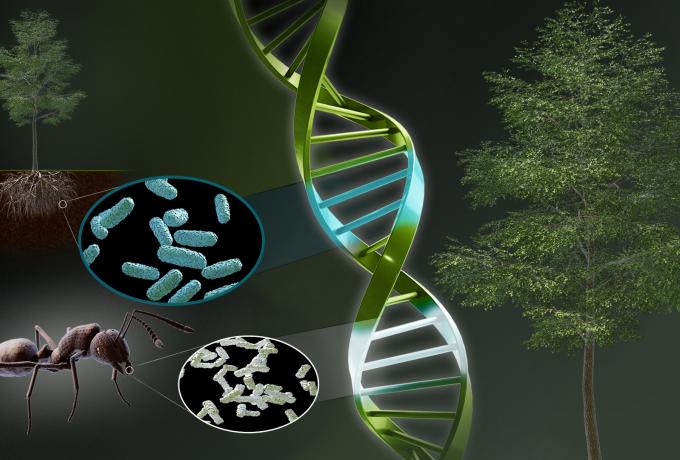Advanced Plant Phenotyping Laboratory (APPL)
The Advanced Plant Phenotyping Laboratory (APPL) at Oak Ridge National Laboratory is a cutting-edge research facility at the forefront of decoding, designing, and deploying the crops of tomorrow. Leveraging state-of-the-art imaging technologies, artificial intelligence, and automation, APPL accelerates scientific discoveries that improve crop resilience, increase yields, and support abundant, secure, and affordable domestic energy for the nation.
The system offers one of the most diverse suites of imaging capabilities for plant phenotyping in the world, allowing research teams to see beyond the human eye to uncover critical insights into plant genetics and performance.

The demand for better crops is growing. Scientists need plants that are more resilient, grow larger, require fewer resources, and efficiently convert into valuable fuels and chemicals. Measuring multiple characteristics and processes across plant populations demands both speed and precision. With the ability to process up to 500 large plants along a 700-ft automated track, APPL delivers high-throughput data with greater resolution than traditional manual methods to enable high-precision phenotyping and advance research at an unprecedented pace.

The automated system operates around the clock so researchers can observe minute changes in plant growth and function, identifying key genes and evaluating crop modifications in real time. Sophisticated imaging capabilities and AI-powered analysis helps scientists create detailed profiles of plant traits, which leads to breakthroughs in:
Better crops: Engineering plants that grow taller and convert more efficiently into fuels, materials and chemicals.
Drought resistance: Studying how plants respond to water scarcity to improve stress resilience.
Nutrient efficiency: Optimizing plant metabolism for better growth with fewer inputs.
Collaborating with the Department of Energy’s Center for Bioenergy Innovation and the Plant-Microbe Interfaces Scientific Focus Area, APPL integrates its advanced capabilities with ORNL’s expertise in supercomputing and neutron science to extract valuable insights from billions of data points, driving unparalleled progress in plant science.
APPL was instrumental in the landmark discovery of Booster, a gene that increases plant height by up to 200% and plays a crucial role in photosynthesis.
Using APPL’s advanced imaging and automation, scientists rapidly measured leaf size changes in poplars expressing Booster in a greenhouse setting. The research team identified the gene’s unique origins: one segment comes from bacteria in the poplar root system, another from an ant that cultivates a fungus known to infect poplar, and the third from Rubisco, a protein essential for photosynthesis. Scientists have long sought ways to increase Rubisco levels in plants to enhance crop yield and carbon absorption.
The Booster gene could significantly improve bioenergy crop yields without requiring more land, water, or fertilizer. If it functions similarly in food crops, it may help reduce food scarcity around the world.

State-of-the-Art Imaging Capabilities
Measures size, shape, and height to model plant architecture.
Analyzes plant morphology and growth dynamics.
Measures photosynthetic activity and stress responses.
Detects plant surface temperature and transpiration.
Captures plant biochemical composition beyond visible light.
Creates a digital twin for precise growth tracking.

Insights from APPL’s revolutionary phenotyping research are driving innovations that could strengthen the U.S. agricultural sector. Future applications include:
- Drone-mounted sensors that can scan croplands and diagnose plant health in real time
- Automated monitoring systems that optimize water, fertilizer, and pesticide use
- Enhanced crop breeding strategies that improve resilience and yield
These advancements mean higher productivity, lower costs, and more efficient resource use for farmers, enabling more abundant domestic energy production and strengthening food security across the nation.

"We have the opportunity to visualize, across various spectra, plants as they develop and grow under normal and stressed conditions. We're seeing cues and signals we’ve never been able to detect before, indicating shifts in plants’ physiology and morphology due to conditions like drought stress or pathogen attacks. The potential to predict changes before they are visually apparent is exciting. This is unexplored territory.”










